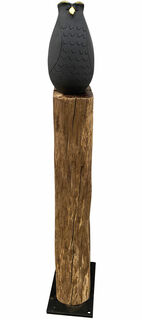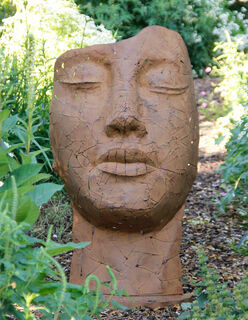21st century
Sculpture in the 21st Century - Modernity Meets Tradition
In the first two decades of the 21st century, no new revolutionary styles can be observed, unlike the multiple ones that emerged during the 20th century. Currently, the quality of sculpture consists much more in being open to influences from all epochs - from antiquity to the art of the 20th century - in terms of styles, themes, and techniques. Expressive forms of, for example, Expressionism, Abstraction, or Surrealism, which broke away from lifelike representation and were avant-garde during their conception, have now fully established themselves both among artists and the public. Additionally, traditional figurative works that draw inspiration from epochs such as the Renaissance, Gothic or Classicism also continue to hold their place in exhibitions and in galleries. The themes addressed in contemporary art are extremely diverse as well. The works can be very personal and biographical, but they can also deal with societal critique and political stances. Overall, during this epoch, there is a great openness to all forms of expression, granting 21st-century artists the opportunity to develop their creativity.
Art in the 20th Century - Impulses for Sculpture Today
Sculpture in the 21st century is still clearly influenced by the 20th century, which brought about ground-breaking and lasting changes to the entire visual arts. The field of sculpture underwent an immense transformation and received a plethora of constructive impulses during this century. Innovative styles and forms of expression such as Expressionism, Abstraction, Surrealism, Found Object Art or Pop Art, artists opened up new horizons. Moreover, throughout the century, the boundaries between sculpture and other art forms such as installation, art in architecture, kinetics, object art or multimedia began to blur, leading to diverse forms of crossover. Among the ranks of artists participating in international exhibitions and auctions today, many who were active during the 20th century still play a prominent role and significantly shaped sculpture, such as Georg Baselitz, Damien Hirst, Markus Lüpertz, Tony Cragg or Günther Uecker. However, many young and creative artists are ready to make their mark on sculpture in the 21st century.
Sculpture of the 21st Century at ars mundi
Here, at ars mundi, you will find a whole variety of contemporary artists, styles, and themes of 21st-century sculpture art. For example, we present impressive abstract works by artists such as Nikolaus Weiler, Susanne Immer, Ulrike Buhl, Sonja Edle von Hoeßle and Volkmar Haase. In contrast, Stefan Szczesny, Itzik Benshalom, Horst Antes and Hans Otto Lohrengel are dedicated to the contemporary interpretation of figuration. Bruno Bruni or Paul Wunderlich borrow elements from Surrealism, and artists such as Thomas Hoffmann, Romero Britto or James Rizzi are following the tradition of Pop Art. We also offer some classical pictorial themes, for example, sensitive nudes by Richard Senoner, Roman Johann Strobl and Hans Rabanser, or modern interpretations of animal depictions by Evert den Hartog and Thomas Otto. Valerie Otte and Thomas Jastram devote themselves to the tradition-steeped subject of human statuettes in a very modern way. In addition, you will find astute conceptual art by Ottmar Hörl as well as humorous objects by Loriot and Otto.






























